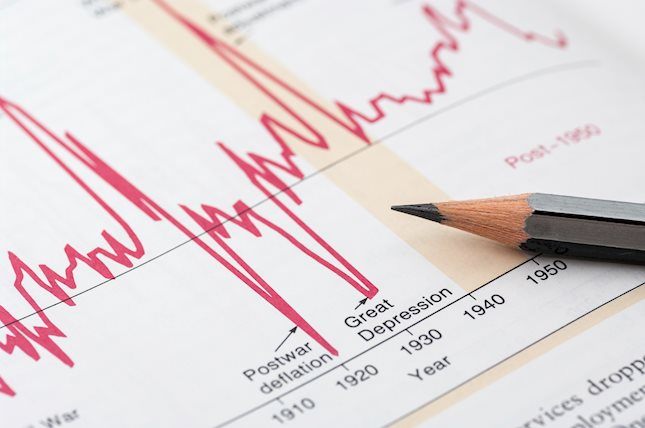Reserve Bank of Australia Governor Michele Bullock said on Thursday that it’s premature to assess the impact of the US presidential election outcome and tariff implications.
Key quotes
Premature to assess the impact of US election outcome.
Too early to assess tariff implications.
Monitoring global developments, prepared to move accordingly.
RBA will respond as needed to geopolitical risks.
China's stimulus plans are a positive for China and Australia.
Australia's domestic inflation outlook is unchanged as yet.
Government cost of living relief helps at the margin with inflation challenge.
Market reaction
At the time of writing, AUD/USD is trading 0.02% lower on the day at 0.6570.
RBA FAQs
The Reserve Bank of Australia (RBA) sets interest rates and manages monetary policy for Australia. Decisions are made by a board of governors at 11 meetings a year and ad hoc emergency meetings as required. The RBA’s primary mandate is to maintain price stability, which means an inflation rate of 2-3%, but also “..to contribute to the stability of the currency, full employment, and the economic prosperity and welfare of the Australian people.” Its main tool for achieving this is by raising or lowering interest rates. Relatively high interest rates will strengthen the Australian Dollar (AUD) and vice versa. Other RBA tools include quantitative easing and tightening.
While inflation had always traditionally been thought of as a negative factor for currencies since it lowers the value of money in general, the opposite has actually been the case in modern times with the relaxation of cross-border capital controls. Moderately higher inflation now tends to lead central banks to put up their interest rates, which in turn has the effect of attracting more capital inflows from global investors seeking a lucrative place to keep their money. This increases demand for the local currency, which in the case of Australia is the Aussie Dollar.
Macroeconomic data gauges the health of an economy and can have an impact on the value of its currency. Investors prefer to invest their capital in economies that are safe and growing rather than precarious and shrinking. Greater capital inflows increase the aggregate demand and value of the domestic currency. Classic indicators, such as GDP, Manufacturing and Services PMIs, employment, and consumer sentiment surveys can influence AUD. A strong economy may encourage the Reserve Bank of Australia to put up interest rates, also supporting AUD.
Quantitative Easing (QE) is a tool used in extreme situations when lowering interest rates is not enough to restore the flow of credit in the economy. QE is the process by which the Reserve Bank of Australia (RBA) prints Australian Dollars (AUD) for the purpose of buying assets – usually government or corporate bonds – from financial institutions, thereby providing them with much-needed liquidity. QE usually results in a weaker AUD.
Quantitative tightening (QT) is the reverse of QE. It is undertaken after QE when an economic recovery is underway and inflation starts rising. Whilst in QE the Reserve Bank of Australia (RBA) purchases government and corporate bonds from financial institutions to provide them with liquidity, in QT the RBA stops buying more assets, and stops reinvesting the principal maturing on the bonds it already holds. It would be positive (or bullish) for the Australian Dollar.
Information on these pages contains forward-looking statements that involve risks and uncertainties. Markets and instruments profiled on this page are for informational purposes only and should not in any way come across as a recommendation to buy or sell in these assets. You should do your own thorough research before making any investment decisions. FXStreet does not in any way guarantee that this information is free from mistakes, errors, or material misstatements. It also does not guarantee that this information is of a timely nature. Investing in Open Markets involves a great deal of risk, including the loss of all or a portion of your investment, as well as emotional distress. All risks, losses and costs associated with investing, including total loss of principal, are your responsibility. The views and opinions expressed in this article are those of the authors and do not necessarily reflect the official policy or position of FXStreet nor its advertisers. The author will not be held responsible for information that is found at the end of links posted on this page.
If not otherwise explicitly mentioned in the body of the article, at the time of writing, the author has no position in any stock mentioned in this article and no business relationship with any company mentioned. The author has not received compensation for writing this article, other than from FXStreet.
FXStreet and the author do not provide personalized recommendations. The author makes no representations as to the accuracy, completeness, or suitability of this information. FXStreet and the author will not be liable for any errors, omissions or any losses, injuries or damages arising from this information and its display or use. Errors and omissions excepted.
The author and FXStreet are not registered investment advisors and nothing in this article is intended to be investment advice.
Recommended content
Editors’ Picks

EUR/USD struggles near 1.0550 amid dour mood
EUR/USD struggles near 1.0550 in the European morning on Thursday. The pair faces headwinds from risk-off flows due to rising geopolitical conflict between Russia and Ukraine and worries over the potential US tariffs on the EU. ECB- and Fedspeak are awaited.

GBP/USD trades around 1.2650, upside potential seems limited
GBP/USD keeps its range near 1.2650 in early European trading on Thursday. The pair's sidetrend could be attributed to the softer US Dollar and a risk-aversion market environment. Traders stay cautious amid rife geopolitical tensions and a light economic calendar. Fedspeak eyed.

Gold price retains its bullish bias near one-week high amid rising geopolitical risks
Gold price maintains its bid tone heading into the European session and currently trades around the $2,660 level, or a one-and-half-week high touched earlier this Thursday. This marks the fourth straight day of a positive move and is sponsored by geopolitical risks stemming from the worsening Russia-Ukraine war.

Shiba Inu holders withdraw 1.67 trillion SHIB tokens from exchange
Shiba Inu (SHIB) trades slightly higher, around $0.000024, on Thursday after declining more than 5% the previous week. SHIB’s on-chain metrics project a bullish outlook as holders accumulate recent dips, and dormant wallets are on the move, all pointing to a recovery in the cards.

Why Nvidia’s story is far from over
Nvidia delivers another earnings beat: Nvidia exceeded expectations with $35.08 billion in revenue, a 94% year-over-year increase, driven by strong performance in its data center business, which more than doubled to $30.8 billion.

Best Forex Brokers with Low Spreads
VERIFIED Low spreads are crucial for reducing trading costs. Explore top Forex brokers offering competitive spreads and high leverage. Compare options for EUR/USD, GBP/USD, USD/JPY, and Gold.